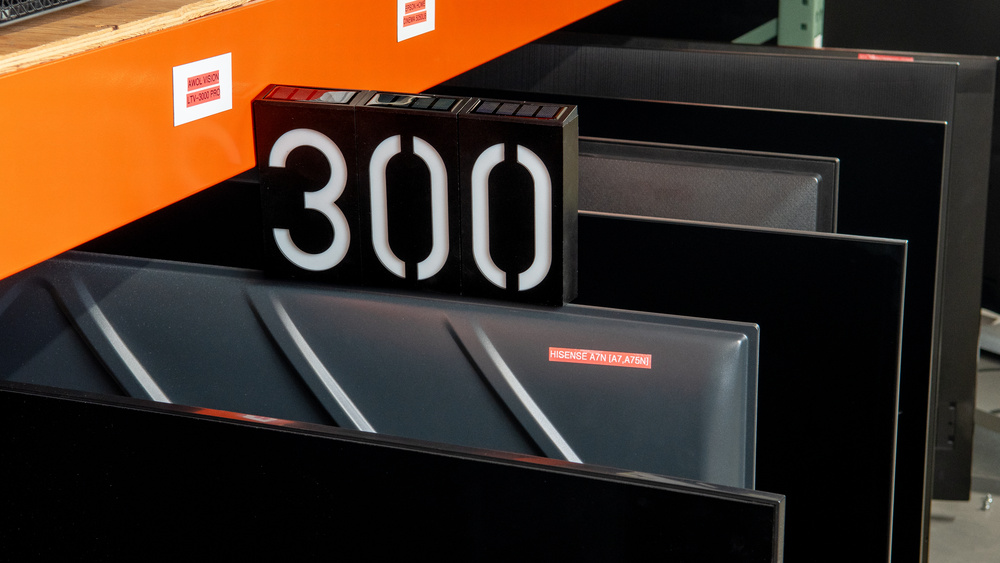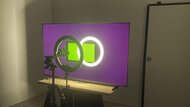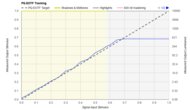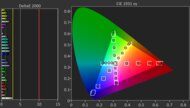Although the market is flooded with TV models, most manufacturers focus more on budget to high-end options, so finding a decent cheap model can be challenging. TVs under $300 tend to lack features, don't have the best picture quality, and are usually only available in smaller sizes, but you still want a model that looks decent. You're not going to get a TV that displays deep blacks for a few hundred dollars, but you can still find TVs bright enough to use in a room with the lights on, ones that display vibrant colors, and ones that have clear enough motion. By putting dozens of TVs each year through our standardized testing procedure, we can determine which models under $300 are worth your money.
Below are our picks for the best TVs under $300 that are available for purchase. If your budget is more flexible, see our recommendations for the best smart TVs, the best budget TVs, and the best TVs under $500, or vote on which ones you want us to buy and test. To learn about the models currently on the market, check out our 2025 TV lineup page.
Quick Look

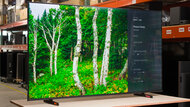

We buy and test dozens of TVs yearly, taking an objective, data-driven approach to deliver results you can trust. Our testing process is complex, with hundreds of individual tests that take over a week to complete. Most of our tests are done with specially designed test patterns that mimic real content, but we also use the same sources you have at home to ensure our results match the real-world experience. We use two main tools for our testing: a Colorimetry Research CR-100 colorimeter and a CR-250 spectroradiometer.
-
Best TV Under $300
 Mixed Usage6.8Home Theater6.9Bright Room6.8Sports6.6Gaming6.7Brightness6.0Black Level7.2Color7.3Processing (In Development)6.5Game Mode Responsiveness6.7Resolution4kNative Refresh Rate60HzScreen FinishGlossyTypeLEDSub-TypeVASee all our test resultsDolby VisionYes
Mixed Usage6.8Home Theater6.9Bright Room6.8Sports6.6Gaming6.7Brightness6.0Black Level7.2Color7.3Processing (In Development)6.5Game Mode Responsiveness6.7Resolution4kNative Refresh Rate60HzScreen FinishGlossyTypeLEDSub-TypeVASee all our test resultsDolby VisionYesThe 50-inch Hisense QD7QF is currently the best TV under $300 you can buy. You won't find top-tier image quality in this price range, but this TV actually looks alright. It has local dimming to improve its contrast, so blacks are deep and the image has good depth to it. Colors look decent on this TV, so the image has some vibrancy to it. It's also bright enough in SDR to overcome glare from indirect lighting in a moderately lit room, but mirror-like reflections are still visible on the screen. Unfortunately, it's too dim in HDR to make highlights stand out like they should, so HDR content looks a bit lackluster. Like most LED models, it has a pretty narrow viewing angle, so it's best to sit as centered to the screen as possible for the best image quality.
The TV supports Dolby Vision and HDR10+, both of which help the image look the best it can when watching HDR content. The TV comes equipped with the Fire TV OS, which supports a few smart features like voice control, and has a ton of streaming apps available to download. The TV doesn't have HDMI 2.1 bandwidth, so you're limited to 4k @ 60Hz, but it does support VRR to help reduce screen tearing. It supports 1440p @ 120Hz, but the TV's input lag is very high in this mode, so it's usually best to stick with 60Hz on this model.
-
Best Value TV For Under $300
 Mixed Usage6.0Home Theater5.8Bright Room6.3Sports6.0Gaming6.2Brightness5.6Black Level4.9Color6.8Processing (In Development)6.3Game Mode Responsiveness6.7Resolution4kNative Refresh Rate60HzScreen FinishGlossyTypeLEDSub-TypeVASee all our test resultsDolby VisionYes
Mixed Usage6.0Home Theater5.8Bright Room6.3Sports6.0Gaming6.2Brightness5.6Black Level4.9Color6.8Processing (In Development)6.3Game Mode Responsiveness6.7Resolution4kNative Refresh Rate60HzScreen FinishGlossyTypeLEDSub-TypeVASee all our test resultsDolby VisionYesThe 55-inch Hisense QD6QF is a decent choice for those on a very tight budget, as it's the best-value TV under $300. Unlike the Hisense QD7QF, it doesn't have local dimming to deepen blacks, so dark scenes look washed out. The TV is dimmer as well, but it's just bright enough to handle some glare in a room with a few overhead lights on. However, just like the QD7QF, direct reflections are very visible on the screen. Colors aren't as vibrant on this model, but it's just colorful enough that the image doesn't look too muted. Sadly, it's just too dim in HDR to provide an impactful HDR experience. Like the QD7QF, it has a narrow viewing angle.
Even though it's cheaper, you still get HDR10+ and Dolby Vision, so it has great compatibility with different streaming services. It runs the same Fire TV OS as the pricier model, so you still get access to a ton of apps and have some smart features to use. It has the same gaming features too, so you can play in 4k @ 60Hz with VRR and low input lag, or 1440p @ 120Hz with higher input lag.
Notable Mentions
-
TCL 50QM5K:
The 50-inch TCL QM5K is an alternative to the Hisense QD7QF for those who can stretch their budget a bit above $300. The TCL is brighter, has better image processing, displays smoother motion, and supports up to 1440p @ 120Hz with VRR and low input lag. If you can spend a bit more to get the TCL, you end up with a noticeably better TV.
See our review -
TCL 55S551G:
The 55-inch TCL S5/S551G is an alternative to the Hisense QD6QF if you care most about gaming performance. The Hisense has noticeably better image quality, but the TCL supports 1080p and 1440p @ 120Hz with VRR and low input lag, making it the better option for those who want to play competitive titles in 120 fps.
See our review
Recent Updates
Nov 18, 2025:
Replaced the TCL Q651G with the Hisense QD7QF in the 'Best TV Under $300' category, and replaced the Roku Select Series with the Hisense QD6QF in the 'Best Value TV For Under $300' category. We also updated the Notable Mentions.
Sep 04, 2025:
Replaced the Hisense A7N with the TCL Q651G as our top pick. We also updated the Notable Mentions section and refreshed other text throughout the article for clarity.
Apr 16, 2025:
Tweaked some text throughout the article for accuracy.
Dec 09, 2024:
Rewrote the introduction paragraphs for clarity and updated the Notable Mentions section.
Sep 25, 2024: Replaced the Hisense U6/U6K with the Hisense A7N in the 'Best TV Under $300' category since the former is no longer available. We also updated the Notable Mentions section to bring it up-to-date.
All Reviews
Our recommendations above are what we think are currently the best televisions under $300 for most people. We factor in the price (a cheaper TV wins over a pricier one if the difference isn't worth it), feedback from our visitors, and availability (no TVs that are difficult to find or almost out of stock everywhere).
If you would like to do the work of choosing yourself, here is the list of all our reviews of TVs available under $300. Be careful not to get too caught up in the details. While no TV is perfect, most TVs are great enough to please almost everyone, and the differences are often not noticeable unless you really look for them. Also, keep in mind that our scores aren't comparable across different test benches, so most of the older TVs in the list below score higher than they would today.
